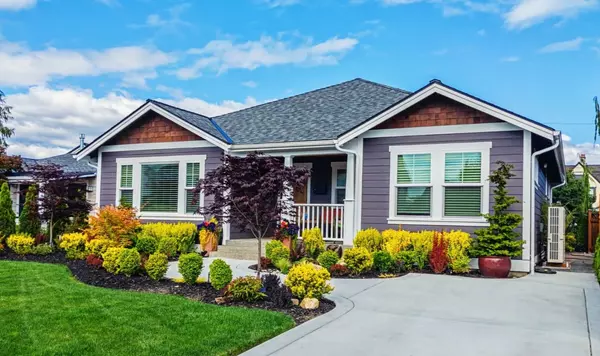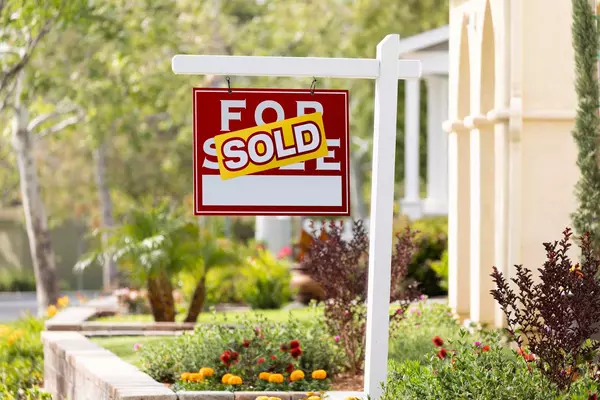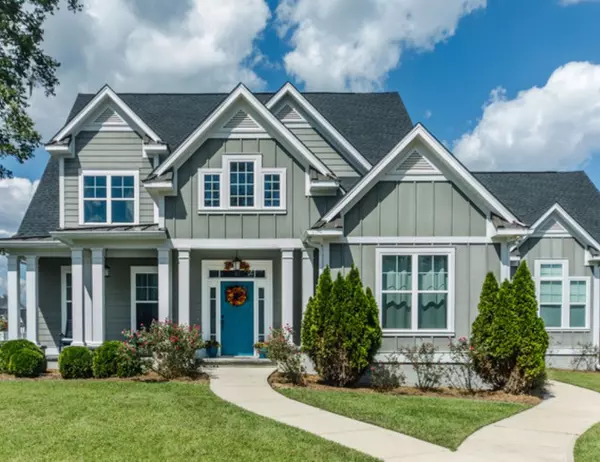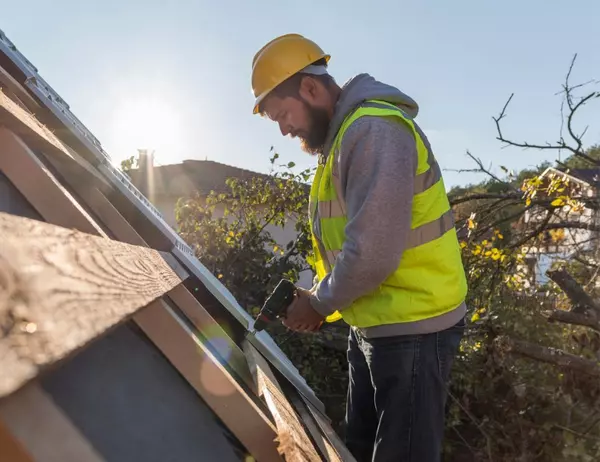
Jacksonville Housing Market 2025: Why Buying Now Beats Waiting for Perfect Timing
I often hear the same question from buyers: "Should I buy now or wait for prices to drop?" It's a valid concern, especially with recent interest rate shifts and changing home prices in our area. But here's what 15 years of selling homes in Jacksonville has taught me - waiting for the "perfect moment" to buy often means missing out on years of potential gains. Right now, homes in popular Jacksonville neighborhoods like Mandarin and San Marco are showing steady appreciation, even as the market adjusts to higher interest rates. A $350,000 home purchased in Riverside just five years ago is worth roughly $475,000 today. That's the power of time in the market. Consider this: Jacksonville's population grew by 3.4% last year, driving consistent demand for housing. Our city's strong job market, with major employers like Mayo Clinic and CSX Corporation expanding their presence, continues to attract new residents. This steady population growth, combined with limited housing inventory, creates a foundation for long-term home value appreciation. But what about rising interest rates? Yes, rates are higher than they were in 2021, but they're still below historical averages from the 1980s and 1990s. More importantly, you can refinance your loan when rates drop, but you can't go back in time to capture missed equity gains. Let's look at a real example from our market. A client of ours debated buying in Jacksonville Beach throughout 2022, hoping prices would fall. They finally purchased their home in late 2023 for $450,000. In that waiting period, they missed out on approximately $25,000 in appreciation and paid a higher interest rate. Meanwhile, their rent increased twice. The math is clear: If you buy a $400,000 home in Jacksonville today, based on conservative market projections, you could build over $80,000 in equity by 2030. That's wealth you're building while simply living in your home. Renters in our market are paying an average of $1,800 monthly, with nothing to show for it long-term. What about affordability? Jacksonville offers numerous paths to homeownership. First-time buyers might consider starting with a townhouse in Wolf Creek or condos in Jacksonville Beach. Many first-time buyers don't realize there are numerous down payment assistance programs available to help with initial costs. For example, the Jacksonville Housing Authority offers up to $50,000 in down payment assistance for qualified buyers. Here's what matters: every month you wait is a month of lost equity building. While timing the market perfectly might seem tempting, history shows that the Jacksonville market rewards long-term homeowners. Our city's strong economic fundamentals, growing population, and relative affordability compared to other Florida metros suggest continued steady appreciation. The best time to buy a home isn't when the market is perfect - it's when you're financially ready and find a home that meets your needs. Interest rates will fluctuate, home prices will rise and fall, but the long-term trend in Jacksonville real estate has consistently pointed upward. Are you ready to explore your options in Jacksonville's market? Contact me now to discuss your homebuying goals and create a strategy that works for your situation.

Jacksonville Home Not Selling? 4 Expert Solutions for a Quick Sale
The Jacksonville housing market has seen its fair share of ups and downs. Right now, even with high buyer demand and limited inventory across our area, some homes are sitting on the market longer than expected. As a local real estate agent who's helped hundreds of Jacksonville homeowners sell their properties, I've noticed a pattern: when a house isn't selling, there's usually a specific reason – or several – behind it. Recent data shows that in Northeast Florida, about 25% of listings expired or were withdrawn from the market in 2024 before finding a buyer. That's one in four homes that didn't sell as planned. Here's what I've learned from years of selling homes in neighborhoods from Mandarin to the Beaches, and what you can do if your house isn't attracting the right buyers. Price Alignment with Today's Market In Jacksonville's current market, pricing strategy is more crucial than ever. With mortgage rates hovering around 7%, buyers are extremely price-sensitive. I recently worked with a seller in San Marco whose home sat on the market for 45 days without any offers. After analyzing recent sales of similar homes in the area and adjusting the price by just 4%, we received multiple offers within a week. The key is understanding that buyers today have access to extensive market data. They know when a house is overpriced for its condition and location. A prime example: homes in Jacksonville's Southside that are priced within market range are selling in an average of 22 days, while overpriced homes in the same area often sit for 90 days or more. Presentation Matters More Than Ever First impressions carry significant weight in our digital age. With 94% of buyers starting their search online, your home's presentation needs to shine both virtually and in person. This doesn't mean expensive renovations – often, it's the simple things that make the biggest impact. Focus on these high-impact, low-cost improvements: Deep cleaning, especially carpets and windows Decluttering all spaces, including closets and garage Basic landscaping maintenance Minor repairs like fixing loose doorknobs or leaky faucets Depersonalizing spaces while maintaining a warm feel Availability for Showings Here's something many Jacksonville sellers don't realize: restricting showing times can significantly impact your chances of selling. Our market sees many out-of-state buyers, particularly from the Northeast and California, who often have limited time to view properties during their house-hunting trips. A recent client in Riverside initially only allowed showings on weekends. After three weeks with minimal interest, we opened up showing availability to include weekday evenings. Within ten days, we had an offer from a buyer relocating from Boston who could only view homes during their brief mid-week visit. Marketing Strategy and Exposure The "list it and forget it" approach rarely works in today's market. Your home needs a comprehensive marketing strategy that goes beyond just MLS listings. This means: Professional photography that highlights your home's best features Virtual tours that are especially valuable for out-of-state buyers Targeted social media promotion to reach specific buyer demographics Strategic open houses timed with local events or peak buying seasons From my experience selling homes in the Jacksonville area, these factors often determine whether a home sells quickly or lingers on the market. If your house isn't selling, it's worth reviewing each of these aspects with your agent to identify potential improvements. Every home will sell at the right price, in the right condition, with the right marketing strategy. The key is identifying which of these elements needs adjustment for your specific situation. Need more specific advice about selling your Jacksonville home? Contact me today for a personalized assessment of your property's market position. I will be more than happy to help you achieve your real estate goals. You may also like: Selling Your Home in Jacksonville: What You Need to Know About Real Estate Agents

Selling Your Home in Jacksonville: What You Need to Know About Real Estate Agents
Picture this: You're standing in your Jacksonville home, years of memories packed into every corner, and you're ready to sell. The temptation to do it alone might be strong, but the real estate landscape has changed dramatically, and doing it yourself isn't as straightforward as it once seemed. Recent data from the National Association of Realtors (NAR) shows a record low number are going the route of selling on their own. Instead, more and more homeowners are choosing to work with a real estate agent (see graph below): Why Professional Representation Matters Selling a home isn't just about putting a "For Sale" sign in the yard. It's a complex process that requires expertise, strategic planning, and deep market knowledge – especially in a dynamic market like Jacksonville's. 1. Pricing Precision Matters Pricing your home correctly is more art than science. In Jacksonville's diverse neighborhoods – from historic Riverside to modern Arlington – home values can vary dramatically within just a few blocks. A professional real estate agent brings critical insights that go beyond simple square footage calculations. Think of your home's price like a tailored suit. Too loose, and it looks baggy and unappealing. Too tight, and it restricts movement. The right fit requires expert measurement and understanding of current market trends. Local market data shows that homes listed with real estate agents typically sell for 33% more than For Sale By Owner (FSBO) properties. In Jacksonville's competitive market, that's not just a number – it's a significant financial difference that can translate to thousands of extra dollars in your pocket. 2. Paperwork and Legal Complexity Real estate transactions involve mountains of paperwork. Each document carries legal implications that can be overwhelming for the average homeowner. A single misunderstood clause or missed disclosure could result in potential legal challenges or transaction delays. Professional agents understand these complexities. They've navigated thousands of transactions, knowing exactly what forms need completion, which details matter most, and how to protect your interests throughout the selling process. 3. Marketing Beyond the Basics In today's digital age, selling a home requires more than a listing and a hope. Professional agents leverage sophisticated marketing strategies, including professional photography, targeted online advertising, and networks of potential buyers. For Jacksonville homeowners, this means reaching beyond local buyers. Your agent can tap into networks of relocation specialists, corporate housing managers, and out-of-state buyers interested in our vibrant community. 4. Negotiation Expertise When offers start coming in, having a skilled negotiator becomes crucial. Real estate agents don't just present offers – they strategically position your property, manage counteroffers, and ensure you're getting the best possible terms. In Jacksonville's dynamic market, which can shift quickly between buyer's and seller's markets, this expertise is invaluable. The Bottom Line Selling your home is more than a transaction – it's a significant life moment. While the temptation to save on commission might seem appealing, the potential financial and emotional benefits of working with a professional far outweigh the costs. For Jacksonville homeowners ready to sell, partnering with a local real estate expert isn't an expense. It's an investment in a smoother, more profitable home selling experience. Ready to make your move? Connect with Nia Sawyer today, a local Jacksonville real estate professional who understands our unique market and can guide you through every step of your home selling journey.
Categories
Recent Posts







